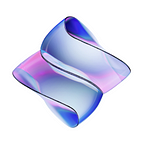What is chain abstraction, and how is SEDA building to empower it?
Imagine a Web3 world where you could use any application or wallet without worrying about which blockchain you were connected to. Chain abstraction is the blockchain technical breakthrough driving a new standard for cross-chain interactions, executions, and Web3 UI/UX. But what exactly is chain abstraction, and is it worth all the attention it is receiving? In this blog, we will break down what chain abstraction is, its benefits, and how SEDA is building to be critical infrastructure within the Chain Abstraction stack.
What Is Chain Abstraction?
Chain abstraction refers to interacting with any dApp without knowing or managing which blockchain one interacts with. For example, a chain abstracted DeFi dApp would allow the user to connect to the dApp and then select an action such as depositing $100 USDC into staking pool A. Once selected, an app can execute the transaction without the user knowing which chain the pool is on or which chain their funds are coming/going to. Chain abstraction allows for one single entry point where a user can interact with all of Web3 without leaving that dApp. As the name implies, the blockchain chain is abstracted from user interaction.
The Chain-Abstraction Stack
The Application Layer: These are the dApps that users interact with.
The Permission Layer includes wallets and keys that can be read to verify that a user has the value to execute an action.
Solver Layer: This comprises complex software that can estimate the fees, transaction speed, and likelihood of transaction execution aggregated across all chains required to execute the user action. It is in this layer that possible pathways to execute the transaction are determined.
Settlement Layer: This layer is triggered once a user signs the transaction the solver layer presents. The transaction is then executed across the selected pathway and is verified as completed within the settlement layer. An example is how SEDA issues intent-execution proofs, a special message to the origin chain that confirms an action has been completed on the destination chain.
When users interact with a dApp, the value in their wallets is confirmed, a pathway to execute a transaction is determined, including speed, fees, and transaction possibility, and finally, upon transaction execution, proofs are checked and verified before being sent to origin chains to settle the transaction.
An Example Of Chain Abstraction With SEDA
Imagine Alice is using the hypothetical dApp ‘Any-Stake.’ Alice wants to stake $100 ETH into a staking pool listed within the dApp. Alice doesn’t know what chain the dApp is built on or what chain the destination staking pool is on.
Alice then clicks ‘stake now’ and inputs $100 ETH as the staking value. In the back end, the dApp within the application layer communicates with the chain abstraction layer built on to issue Alice’s intent. The chain abstracted layer is watched by solvers, who execute the intent on behalf of Alice. SEDA’s modular data layer reads that the solver has completed the intent on behalf of Alice and confirms the transaction’s finality via intent-execution proofs.
So, from Alice’s point of view, she does not need to interact with any blockchain, simply a dApp’s front end. Upon confirming her action, the chain abstraction stack is triggered to execute her desired action. You can learn more about intents within chain abstraction here.
What Are The Benefits Of Chain Abstraction
Chain Abstraction is the technical breakthrough to build familiar, intuitive, easy-to-use Web3 dApps. Without chain abstraction, users are forced to micro-manage their transactions from the origin chain to the destination chain and within the destination dApp. By building a chain abstracted industry standard, we can imagine a Web3 world where users need only enter from a single point but can have industry-wide access to any dApp.
As we know from Web2, most consumers are interested in something other than the infrastructure that powers their experiences. The same will be valid for Web3 as we move away from infrastructure maximalism and focus on end-user experiences as the driving force for adoption. Chain abstraction will enable dApps to focus on the end-user experience first and foremost, benefitting the wider industry.
Why Is SEDA Considered a Critical Infrastructure For Chain Abstraction?
Since its inception, SEDA’s modular data layer has been built to connect to 230+ blockchains. Being 100% permissionless, SEDA is a chain-agnostic super highway for protocols to issue complex data queries, including data intents from any single source. SEDA is the data layer that effectively transfers information between chains and off-chain data to and from any network. Builders can issue data intent queries on the same day they integrate with SEDA to access any other blockchain.
